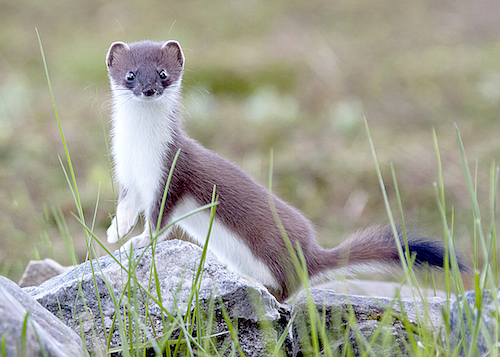£64,000 granted for stoat eradication project

£64,600 in funding has been awarded toward plans for a stoat eradication project in Orkney, set to be the largest of its kind in the world.
The Orkney Native Wildlife Project, which aims to safeguard Orkney’s native wildlife by addressing the threat from the non-native predator, could also be set to benefit from more than £3 million in funding next year.
The initial grant has been made by the Heritage Lottery Fund (HLF) and was announced earlier today.
The eradication project has been developed through a partnership between Scottish Natural Heritage (SNH) and RSPB Scotland.
Stoats are native to the UK mainland but not Orkney where they were first seen in 2010. Despite various attempts to remove the animal since the first sightings, stoats has spread across the Orkney mainland and the connected isles. According to SNH, only the county’s non-linked islands remain stoat-free.
In announcing the granting of the money, an SNH spokesman stated the importance of Orkney as a home for wildlife and, despite the islands having a combined land area accounting for less than one per cent of the UK, the county is home to more than a fifth of the UK’s breeding hen harriers,
The public body, which is responsible for the UK’s natural heritage, also pointed out Orkney’s internationally important numbers of seabirds, with the county being one of the few places in the UK in which waders, such as curlews, are still a common breeding species.
SNH have said that, as stoats feed on small birds, eggs and small mammals, the animal therefore poses a threat to poultry, the Orkney vole and many birds which are part of Orkney’s wildlife tourism industry.
Lucy Casot, head of the Heritage Lottery Fund in Scotland, said: “This is an extremely important project for the Orkney Islands. Wildlife tourism plays a vital part in the economy of this remote area. With the help of funds raised through the National Lottery, the fragile ecological balance can be restored for the benefit of the rare wildlife that lives there and for the islands as a whole.”
During the nine-month development phase the partnership will consult widely with the local community and stakeholders and develop activities that will ensure locals can be involved in helping native wildlife thrive.

